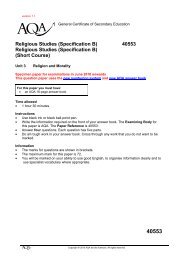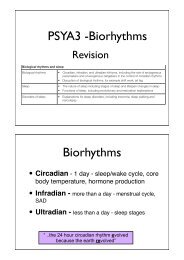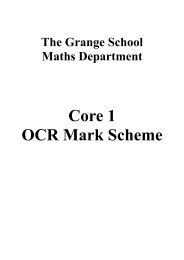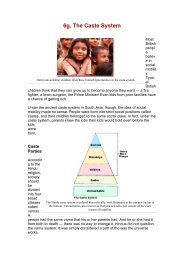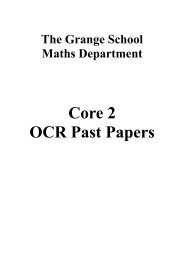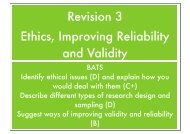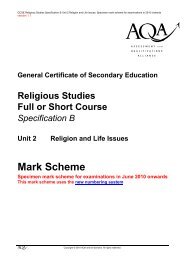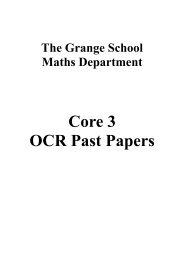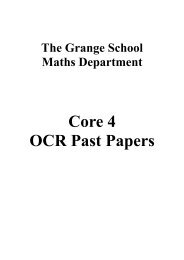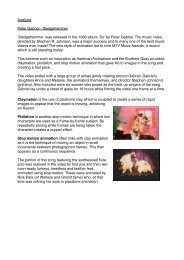Prob & Stats 2 OCR Past Papers - The Grange School Blogs
Prob & Stats 2 OCR Past Papers - The Grange School Blogs
Prob & Stats 2 OCR Past Papers - The Grange School Blogs
You also want an ePaper? Increase the reach of your titles
YUMPU automatically turns print PDFs into web optimized ePapers that Google loves.
2<br />
June 2010<br />
1 (i) <strong>The</strong> number of inhabitants of a village who are selected for jury service in the course of a 10-year<br />
period is a random variable with the distribution Po(4.2).<br />
(a)<br />
Find the probability that in the course of a 10-year period, at least 7 inhabitants are selected<br />
for jury service. [2]<br />
(b) Find the probability that in 1 year, exactly 2 inhabitants are selected for jury service. [3]<br />
(ii) Explain why the number of inhabitants of the village who contract influenza in 1 year can<br />
probably not be well modelled by a Poisson distribution. [2]<br />
2 A university has a large number of students, of whom 35% are studying science subjects. A sample of<br />
10 students is obtained by listing all the students, giving each a serial number and selecting by using<br />
random numbers.<br />
(i) Find the probability that fewer than 3 of the sample are studying science subjects. [3]<br />
(ii) It is required that, in selecting the sample, the same student is not selected twice. Explain whether<br />
this requirement invalidates your calculation in part (i). [2]<br />
3 Tennis balls are dropped from a standard height, and the height of bounce, H cm, is measured. H is a<br />
random variable with the distribution N(40, σ 2 ). It is given that P(H < 32) = 0.2.<br />
(i) Find the value of σ. [3]<br />
(ii) 90 tennis balls are selected at random. Use an appropriate approximation to find the probability<br />
that more than 19 have H < 32. [6]<br />
4 <strong>The</strong> proportion of commuters in a town who travel to work by train is 0.4. Following the opening of<br />
a new station car park, a random sample of 16 commuters is obtained, and 11 of these travel to work<br />
by train. Test at the 1% significance level whether there is evidence of an increase in the proportion<br />
of commuters in this town who travel to work by train. [7]<br />
5 <strong>The</strong> time T seconds needed for a computer to be ready to use, from the moment it is switched on, is<br />
a normally distributed random variable with standard deviation 5 seconds. <strong>The</strong> specification of the<br />
computer says that the population mean time should be not more than 30 seconds.<br />
(i) A test is carried out, at the 5% significance level, of whether the specification is being met, using<br />
the mean t of a random sample of 10 times.<br />
(a) Find the critical region for the test, in terms of t. [4]<br />
(b)<br />
Given that the population mean time is in fact 35 seconds, find the probability that the test<br />
results in a Type II error. [3]<br />
(ii) Because of system degradation and memory load, the population mean time µ seconds increases<br />
with the number of months of use, m. A formula for µ in terms of m is µ = 20 + 0.6m. Use this<br />
formula to find the value of m for which the probability that the test results in rejection of the<br />
null hypothesis is 0.5. [4]<br />
© <strong>OCR</strong> 2010 4733 Jun10



